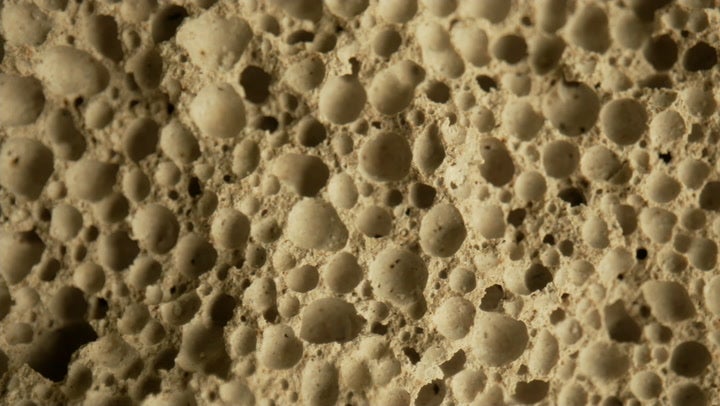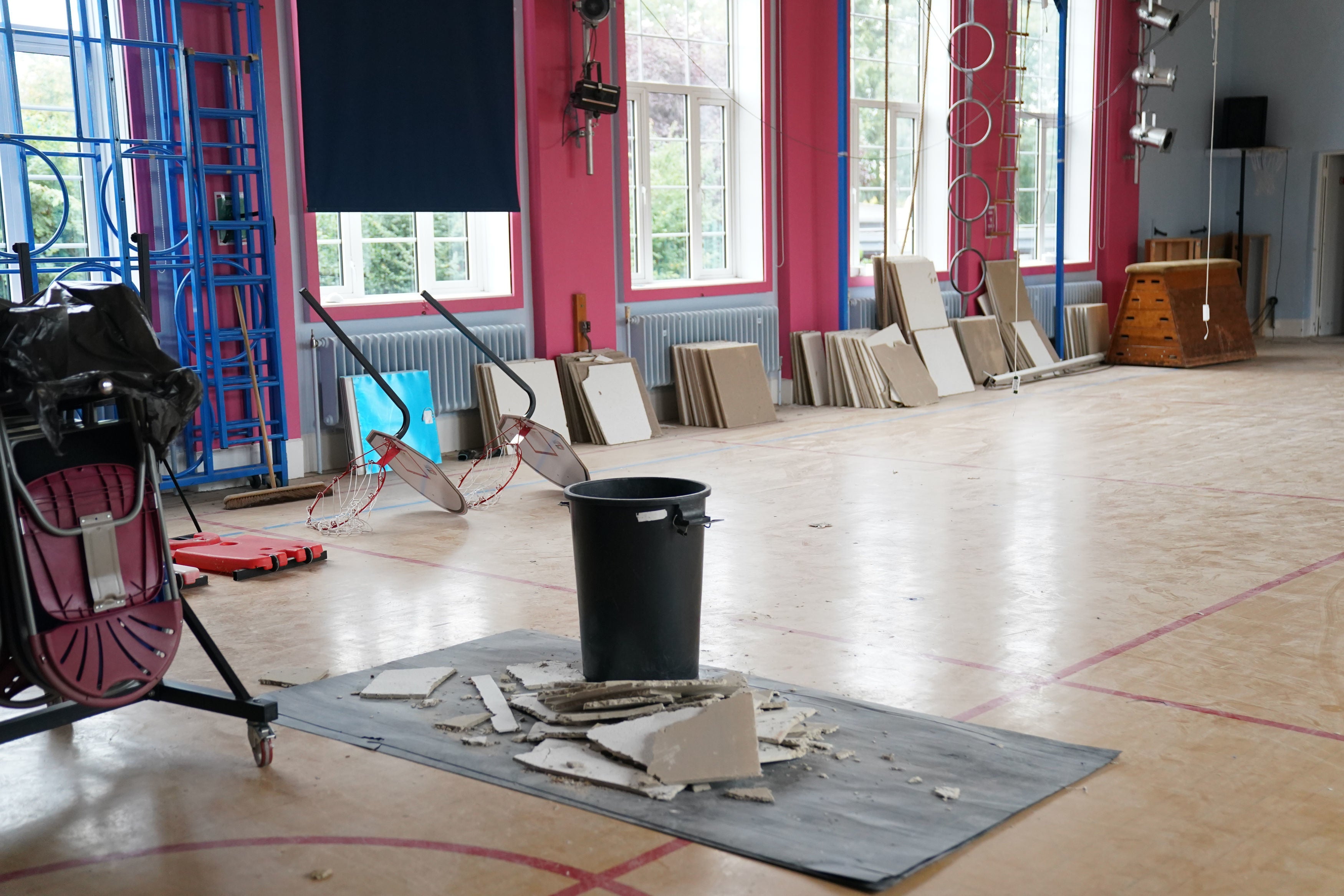Revealed: Obese patients treated on hospital ground floor because of fears of crumbling concrete collapse
Senior MP tells of ‘jaw-dropping’ sight on hospital visit
Your support helps us to tell the story
From reproductive rights to climate change to Big Tech, The Independent is on the ground when the story is developing. Whether it's investigating the financials of Elon Musk's pro-Trump PAC or producing our latest documentary, 'The A Word', which shines a light on the American women fighting for reproductive rights, we know how important it is to parse out the facts from the messaging.
At such a critical moment in US history, we need reporters on the ground. Your donation allows us to keep sending journalists to speak to both sides of the story.
The Independent is trusted by Americans across the entire political spectrum. And unlike many other quality news outlets, we choose not to lock Americans out of our reporting and analysis with paywalls. We believe quality journalism should be available to everyone, paid for by those who can afford it.
Your support makes all the difference.Obese patients are being treated on the ground floor of a hospital because of fears that floors above them made of crumbling concrete could collapse.
The shocking disclosure has been made after a group of MPs visited the hospital, built with reinforced autoclaved aerated concrete (RAAC).
Labour MP Meg Hillier, chair of the Commons Public Accounts Committee, described what the MPs discovered as “jaw-dropping”.
She wrote in The Times: “In one hospital, staff can carry out roof maintenance only if they and their tools are a certain weight.
“Heavy patients must be treated on the ground floor because the combined weight with equipment is too heavy to be safe.”
The MPs visited the hospital, which was not named by Ms Hillier, as part of an investigation into major government programmes.
Has this affected you? Get in touch at maryam.zakir-hussain@independent.co.uk.
RAAC, a lightweight building material used up to the mid-1990s, is thought to be present in buildings at 34 hospitals across England, and the government has pledged seven of the worst affected will be replaced by 2030.
These seven include Airedale, Queen Elizabeth King’s Lynn, Hinchingbrooke, Mid Cheshire Leighton, Frimley Park, West Suffolk Hospital and James Paget Hospital.
The material is deemed a risk because it is aerated and “bubbly” and is less dense than traditional concrete, being described as “80 per cent air” and “like an Aero bar”.
This means it is more prone to collapse over time. In 2018, it was flagged as a safety risk after a school roof collapsed in Kent.

Labour has called for an “urgent audit” to identify the risk of the concrete across the public sector estate, while the Liberal Democrats said the public and NHS staff need “urgent clarity” over whether hospital wards and buildings could be forced to close.
Speaking on Times Radio on Saturday morning, Ms Hillier said: “(You) wonder why it has been left to deteriorate for so long. In both schools and hospitals, there hasn’t been enough money going into buildings and equipment.”
She said millions of pounds are being spent on mitigating the risk of lightweight concrete in hospitals, adding that the costs are “eye-watering and wasteful when you think about the problems in the NHS at the moment”.
“We’re talking millions of pounds to survey a roof in a corridor in order to make sure they know where the problems are… Every time another problem arises, they have to go back and do another survey,” Ms Hillier said.
Matthew Taylor, CEO of the NHS Confederation, said hospitals have known about the problem of aerated concrete in their buildings for years. But the hospital rebuilding programme has been “delayed and delayed”, he told BBC Radio 4’s Today programme.

Leona Cameron, Royal College of Nursing (RCN) head of health, safety and wellbeing, said those responsible for hospital buildings “must act urgently”.
She said: “Nursing staff should expect to go to work in a place that is safe for them and their patients.
“The risks associated with RAAC construction material being used in hospitals have been known about for some time, and safety alerts have been issued warning of the risks.
“For those trusts where there is an ongoing risk – we expect those responsible for the management and maintenance of hospitals and healthcare buildings to act urgently. This means investigating where RAAC has been used and taking appropriate action to make buildings safe and ensure there is no disruption to care.”
Unison assistant general secretary Jon Richards blamed the “perilous state” of all public services on “years of budget cuts”.
“Many plans to upgrade facilities, especially in the NHS, have been repeatedly postponed as a result,” he said.
“Some properties will require extensive work to guarantee their safety. This must happen urgently. It’s also imperative the government foots the bill to ensure schools, the NHS and other essential public services can continue to operate.”
It comes after 104 schools and colleges were told by the Department for Education to partially or fully shut buildings just as pupils prepare to return after the summer holidays.
Though not confirmed, it is estimated that around 24 schools in England have been told to close entirely because of the presence of RAAC, and schools minister Nick Gibb has admitted more could be asked to shut classrooms.

Mr Gibb said that a collapse of a beam that had been considered safe over the summer sparked an urgent rethink on whether buildings with aerated concrete could remain open.
One of those was Willowbrook Mead Primary Academy in Leicester, which received news that it had to close on Thursday – days after pupils went back after the summer break.
“My understanding is they literally evacuated the place,” parent Raj Kaur told The Independent. “The first most parents knew about it was when we arrived for pick-up. All the children were out on the field. It was awful. Children were crying.”
Some parents say teachers have told them the disruption could last well into 2025.
A Department of Health spokesperson said: “The NHS has a mitigation plan in place for hospital buildings with confirmed RAAC, backed with significant additional funding of £698m from 2021 to 2025, for trusts to put in place necessary remediation and fail-safe measures. We remain committed to eradicating RAAC from the NHS estate entirely by 2035.
“Additionally, we have announced that the seven most affected NHS hospitals will be replaced by 2030 through our New Hospital Programme.
“The technical advice received from the NHS is that the current approach to monitoring and mitigation remains appropriate.”



Join our commenting forum
Join thought-provoking conversations, follow other Independent readers and see their replies
Comments